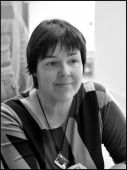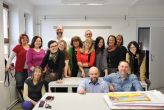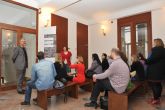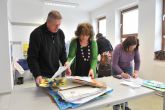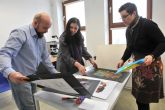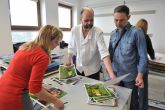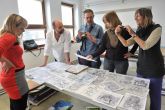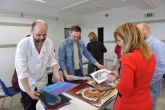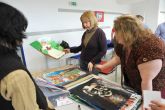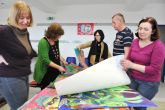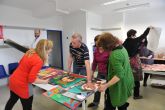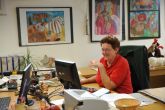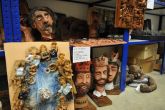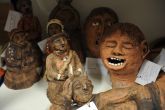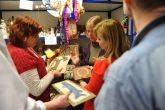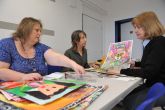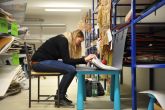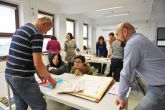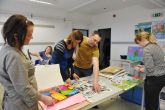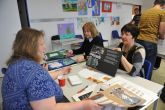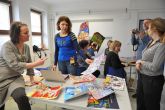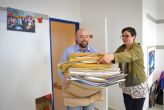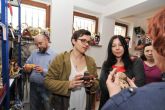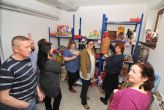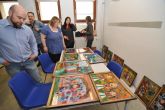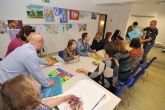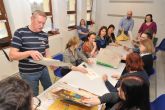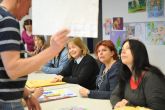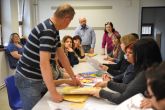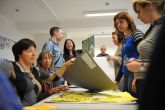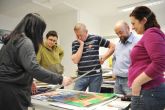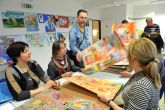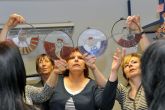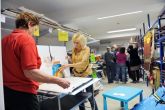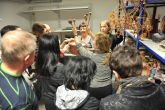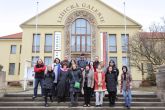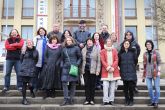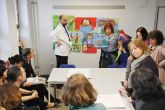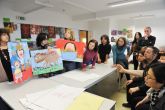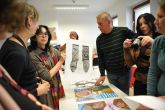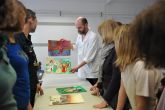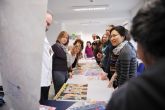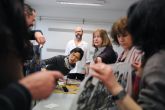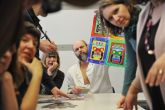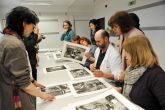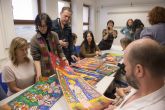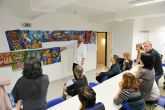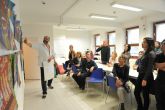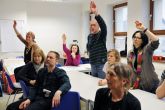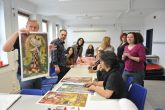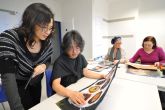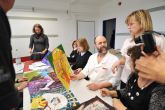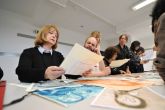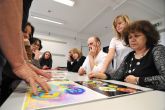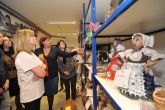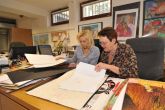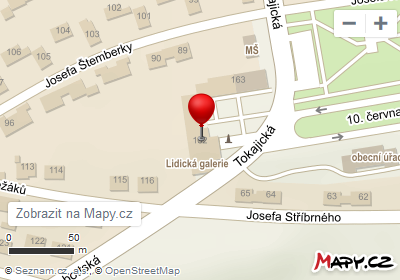Homepage » Archived editions » 41th edition » Panel of judges
Panel of judges
The expert panel of judges is made up of teachers of visual art branches at primary art schools and primary schools and of professional visual artists. The number of judges is not fixed, however, the panel has usually 15 - 23 judges. Many of them have engaged in the work with children for many years and also are judges in other art competitions which enhances their knowledge about the quality of art education of children in the schools in our country and abroad.
The panel of judges of the 41st ICEFA 2013 sat in two rounds: on 2 – 4 April and 6 and 7 April 2013 at the Lidice Gallery in Lidice.
Members of the ICEFA 2013 panel of judges are as follows:
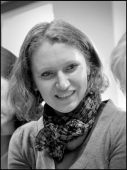
Jana Anděličová
teacher at the M. Podvalová Prim. Art School Prague 9 and the Prim. Art School Štítného Prague 3
Čeněk Hlavatý
headmister of the Primary Art School Mšeno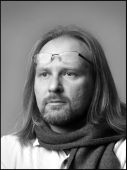
Martin Homola
photographer Buštěhrad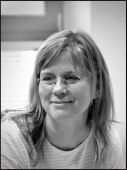
Zuzana Hrubošová
headmistress of the M. Stibor Primary Art School Olomouc
Ivana Junková
headmistress of the Primary Art School Řevnice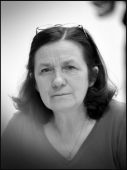
Hana Jurková
headmistress of the Private Primary Art School Jeseník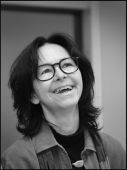
Lada Krupková Křesadlová
photographer and teacher at the Primary Art School Biskupská Prague 1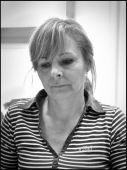
Helena Lisá
teacher at the M. Stibor Primary Art School Olomouc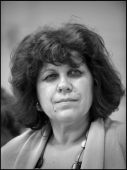
Jaroslava Spěváčková
teacher at the Primary Art School Plzeň Jagellonská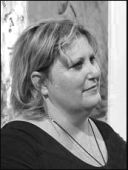
Lada Stará
teacher at the Primary Art School Nové Strašecí
Pavel Rajdl
teacher at the Primary Art School Kolín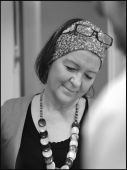
Zuzana Vlčková
teacher at the Grammar School Kladno
Foreign jury members:
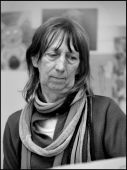
Emi de Graeve
visual artist, Manderfeld, Belgium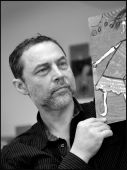
Sergei Grichanok
pedagog Liceum of Arts 133, Charkov, Ukrajina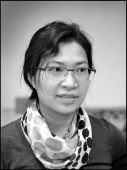
Iris Lau
the founder of the Promotion of Young Artists Foundation, Hong Kong, China
Henry Lau
the founder of the Promotion of Young Artists Foundation, Hong Kong, China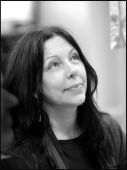
Renata Mečkovskiené
Art department coordinator and teacher at Art School of Trakai, head of conservation department at History Museum of Trakai, Lithuania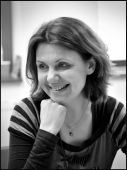
Areta Raudzepa
officer of the National Centre for education at the Ministry of Education and Science of the Republic of Latvia
Report of the Session of the Expert Panel of Judges Held on 2 – 4 April and 6 – 7 April 2013 to Evaluate- the 41st ICEFA Lidice 2013
Members of the Panel of the 41st ICEFA Lidice 2013
Chairman of the panel:
Josef Zedník – visual artist, Olešná
Members of the panel:
Jana Anděličová – teacher at Marie Podvalová Primary Art School Prague 9 - Čakovice and Primary Art School Štítného, Prague 3
Čeněk Hlavatý – headmaster at Primary Art School Mšeno
Martin Homola – photographer, Buštěhrad
Zuzana Hrubošová – headmistress at M. Stibor Primary Art School Olomouc
Ivana Junková – headmistress at Primary Art School Řevnice
Hana Jurková – headmistress at Private Primary Art School Jeseník
Lada Krupková Křesadlová – photographer and teacher at the Primary Art School Biskupská, Prague 1
Helena Lisá – teacher at M. Stibor Primary Art School Olomouc
Jaroslava Spěváčková – teacher at Primary Art School Plzeň, Jagellonská
Lada Stará – teacher at Primary Art School Nové Strašecí
Pavel Rajdl – teacher at Primary Art School Kolín
Zuzana Vlčková – teacher of arts at Gymnázium Kladno
Foreign members:
Emi de Graeve – visual artist, Manderfeld, Belgium
Sergei Grichanok – teacher at Liceum of Arts 133, Kharkov, Ukraine
Henry and Iris Lau – the founders of the Gifted Artists Foundation, Hong Kong, China
Renata Mečkovskiené –coordinator of Arts Department and teacher at Art School Trakai, head of the restoration department of the Historical Museum Trakai, Lithuania
Areta Raudzepa – officer of the National Centre for Education at the Ministry of Education and Science of the Republic of Latvia
Ilze Rimicane – art director of Children’s and Youth’s Centre Daugmale, Riga, Latvia
Based on the updated constitution of the competition and the past years’ experience, the system of evaluation of entries by the expert panel of judges was modified this year – as against the previous one-round evaluation system, the organizer suggested dividing the work of the panel into two equal rounds (the shortlist and the awards themselves), which lasted 5 days. This system contributed to better decision-making and evaluation, the judges had more time to think their decisions over, clarify them, discuss them and have a rest between the two rounds. However, even this year their task was not an easy one – they had to view and assess 24,545 entries from 68 countries.
The entries received into this year’s edition of the competition commemorated the 10th anniversary of a global convention on protection of folk arts, crafts, ceremonies and traditional folk knowledge, the UNESCO Convention on Protection of Intangible Cultural Heritage. To mark the anniversary of this extraordinary convention, the Czech Commission for UNESCO recommended dedicating the 41st International Children’s Exhibition of Fine Arts Lidice to the theme “Traditions and Heritage of My Country’s People” with the following sub-themes: traditional clothing in my country, beautiful things made by craftsmen in my country, village dances, village wedding, folk legends of my country - what are they about?, folk customs, ceremonies and traditions in the course of the year.
Well motivated and familiarized with the theme by their teachers, children depicted much of the listed heritage in their respective countries – traditional crafts, ceremonies, customs and folk creativity, often rare and unique to a region even in the country of their origin, worthy of preservation for future generations. Among the most frequent of the themes of entries by Czech children was merry-making at Shrovetide, Moravian dances, folk costumes and traditional crafts. The pictures brought to life individual figures as well as whole parades, masks, national and regional myths and legends and also historical figures and fairytale characters. The panel of judges was made acquainted with many wedding guests, musicians, costumed suites and craftsmen.
The received entries showed that schools took a very responsible attitude to the exhibition. This year, the vast majority of schools sent in a well-made and well-chosen collection of art works, which clearly showed a discriminating and thoughtful approach. The schools and children’s leisure centres should be commended, for their entries not only pleased the panel of judges, but often amused them and made them laugh; it is good that there was no lack of wit and humour. The personality of the teacher, his/her skills, knowledge, responsibility and zest, continues as the decisive factor in the educational process. Also admirable was the number and variety of the media and materials employed. The planar entries included drawings, paintings and prints, made manually or digitally, as well as photographs. As to the spatial entries, the panel of judges assessed entries of paper, textile, wire and glass as well as items of pottery and mixed media.
Despite all the pluses and the generally good quality, the same problems arose as every year – illegible, incomplete or missing data about the creator or the school, sizes extending the limits set for the entries, needless or unsuitable making-up of entries and diversions from the set theme. Such entries had to be eliminated, often in spite of their indisputable quality.
Summary on Foreign Entries
Number of foreign entries: 18,483
(16,863 paintings, 425 photographs, 204 items of ceramics, 991 mixed media entries)
Number of participating countries: 66 (except for Czech and Slovak Republics)
Number of participating schools: 1447
This year we received entries from 66 countries, many of which participated in the competition for the first time (Australia, New Zealand, Sweden). Some countries had more schools and children engaged (Armenia, Croatia, Lithuania, Macedonia, Montenegro, Pakistan, Slovenia and Serbia). The numbers of entries from various countries varied widely: apart from large collections sent in, as usual, from Hong Kong, Latvia, Russia, Turkey and Ukraine there were also countries represented only by several entries, often from the same school, which prevented the panel of judges from assessing the artistic standard of the country and selecting the best there was.
Assessing the entries, the panel appreciated national traditions and features of the respective countries. Among the planar entries, the best received ones were those from China and Hong Kong (9 medals), Croatia (7 medals), Latvia (11 medals), Russia (7 medals) and Ukraine (8 medals). Standing out among the planar entries were paintings from Srí Lanka, which participated in the competition after quite a long gap caused by a natural disaster. As to the photographs, the panel was pleased again with first-class photos from Croatian photo clubs and Russian and Ukrainian schools. In the category of spatial entries, the attention of the panel was attracted by glasswork and pottery from Latvia and astonishing collections of traditional Shrovetide masks from Hungary and Macedonia.
It is usually very interesting to compare entries of European origin – the entries by children from Central and Eastern Europe, supported by the developed art education system are often of much better quality than entries by children from Western Europe, which lacks art education system, with arts remaining a subsidiary subject at primary schools. Also the quality of some spatial entries from abroad remains doubtful; it is typical namely for Asia that entries demonstrate the wish to please, pandering to popular taste, as well as certain insensitivity to materials.
Summary on Czech and Slovak Entries:
Czech Republic
Number of entries: 4,008 (2,922 paintings, 85 photographs, 505 items of ceramics, 496 mixed media entries)
Number of participating schools: 295
Slovakia:
Number of entries: 2,054 (1,873 paintings, 22 items of ceramics, 158 mixed media entries)
Number of participating schools: 127
There were fewer participating Czech schools,(particularly nurseries, primary schools and special schools, than last year and in previous years. Perhaps some schools that had not won any ICEFA prize decided not to participate any longer. This decision is understandable, as the creation of collections to a given theme may be very demanding and complicated for the schools that are not able to dedicate a lot of time to art work, while limited in space and material.
Planar and spatial works included colour drawings and paintings, prints, drypoints, pottery and mixed media items. As last year, entries by children from primary art schools gained a great success (Blatná, Český Krumlov, Háj ve Slezsku, Holešov, Hradec nad Moravicí, Kolín, Most, Nové Město pod Smrkem, Olomouc, Písek, Plzeň, Prostějov and Strakonice) due to systematic and professional work of the teachers. All the more the panel of judges valued the quality work of teachers at nurseries, (Lišov) primary (Červené Pečky, 3rd Primary School Slaný, Volyně), special (Centrum Arpida České Budějovice, Duha Písek, Centre of Social Services Horizont Protivín, Domov Raspenava) or secondary schools (Grammar School Krnov) as well as at houses of children and youth (House of Children and Youth Prague 2 – Art Studio Vinohrady, Vyšehrad, House of Children and Youth Prague 3 Ulita, Art Workshop Paletka Plzeň).
Although there are photo clubs working at Czech schools, they do not sent in their photos to the competition and this year was no exception. As to the spatial entries, the panel of judges was pleased with the ceramic Shrovetide merry-making from the Primary School Červené Pečky, the set of ceramics from Primary Art School Český Krumlov, PAS Most, PAS Kolín, the set of wire musicians from PAS Strakonice and the parade of roving artists from PAS Blatná.
Awards
Total number of entries: 24 545
Number of participating countries: 68
Out of 24,545 entries from 68 countries, 1,391 were selected by the panel of judges to win prizes including 269 medals.
Out of 17,404 foreign entries 724 won prizes including 122 medals (94 medals to individuals and 28 medals to schools for their collections). The most medals were given to children from Bulgaria, Latvia, Russia, Turkey and Ukraine.
Czech children sent in 4,008 entries this year and received 543 prizes including 79 medals (55 medals to individuals and 24 medals to schools for their collections). The most successful were children from Primary Art School Kolín, PAS Háj ve Slezsku, F.X. Richter PAS Holešov, PAS Jagellonská Plzeň, PAS Prostějov and PAS Strakonice.
Having sent in 2, 054 entries this year, Slovak schools received 232 prizes including 31 medals (23 medals to individuals and 8 medals to schools). Among the Slovak schools the most successful were J. Cikker PAS Banská Bystrica, Private PAS Bratislava, PAS Holíč, PAS Martin, PAS Skalica, PAS Spišská Belá, Private PAS and K. Pádivý PAS Trenčín and PAS Gaštanová Žilina.
Prize of the Panel of Judges
From among the Czech schools, the Prize of the Panel of Judges, awarded to schools for their persistent, purposeful and excellent work, was given to Primary Art School Háj ve Slezsku, which presented itself with a rich and interesting collection – a collection of drawings and prints. The Prize of the Panel of Judges for foreign schools was awarded to Primary Art School Holíč, which sent in a series of first-quality multicolour prints. It should be noted that both schools have sent in their excellent works regularly for many years.
Conclusion
Thanks to a better organization of assessing entries (a two-round system) and an extended working space in the Lidice Gallery for the panel of judges, the work of the expert panel got much better this year. After the last year’s jubilee edition with a record-breaking number of entries, we updated the constitution of the competition to help better organize the competition. Although this year had also more than 24,000 entries, the panel of judges worked in a calm atmosphere of mutual understanding. The international aspect of the panel contributed to interesting exchanges of opinions and comments, putting the language skills of all judges to a test.
Our thanks go to all who took part in the competition, to all who had drawn, painted, printed or modelled their vision of the given theme and sent in their creations to the competition, regardless of whether they won a prize or not. We thank also to all teachers because it is the character of the teacher, their skill, knowledge, zeal and responsibility what plays a vital role in good results of children’s art work. Thanks to all these contributions, this year’s exhibition will be again a unique one! Our thanks go also to the staff of the Lidice Memorial who worked with dedication and willingness and summoned up all their strength to create excellent conditions for the work of the panel of judges as well as this unique exhibition.
Josef Zedník
Chairman of the panel of judges of the 41st ICEFA Lidice
Ivona Kasalická
Head of the Lidice Gallery and Curator of ICEFA Lidice


